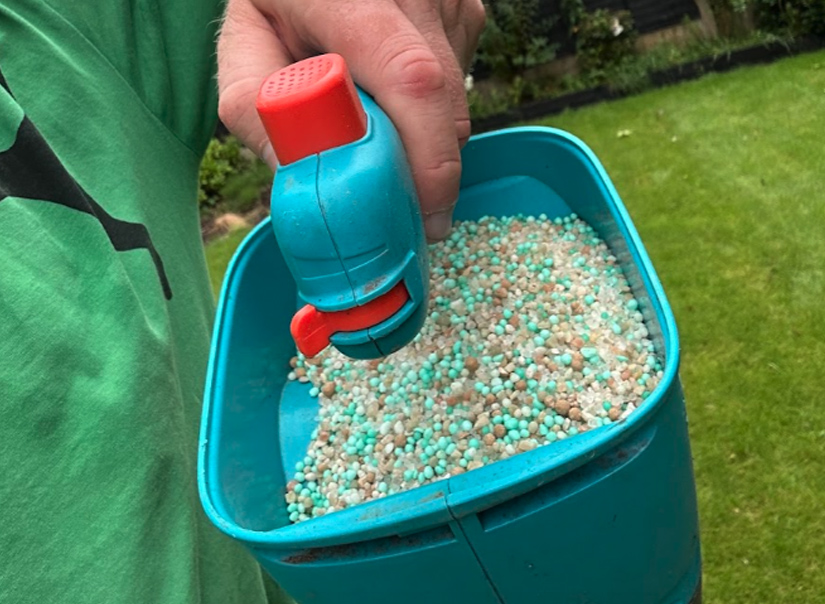
Created By
Matt Adams
Updated On
- October 23, 2024
Get FREE Exclusive Access
Keep your lawn pristine with exclusive tips, offers and insights that I only share with my private subscribers.
Latest Posts
High Nitrogen Fertiliser – Quick vs Slow Release
- By Matt Adams
- October 23, 2024
Jump to
Get FREE Exclusive Access
Keep your lawn pristine with exclusive tips, offers and insights that I only share with my private subscribers.
Maintaining a lush, green lawn requires a careful balance of nutrients, with nitrogen being a key component. High nitrogen fertilisers are particularly effective in promoting vigorous growth and vibrant colour. However, choosing the right type of fertiliser and applying it correctly is crucial to avoid damaging your lawn. This article explores the differences between synthetic and organic fertilisers, the importance of careful application, and the various forms of nitrogen fertilisers available.
Synthetic vs. Organic Nitrogen – What’s the difference?
High nitrogen fertilisers come in both synthetic and organic forms, each with distinct advantages and drawbacks. Synthetic fertilisers are chemically manufactured and typically offer a quick release of nutrients.
They are popular for their immediate impact on lawn health, promoting rapid growth and greening.
However, they can also lead to nutrient runoff and potential environmental harm if not applied correctly.
Organic fertilisers, on the other hand, are derived from natural sources such as compost, manure, and bone meal.
They release nutrients more slowly, improving soil structure and health over time. While they are generally safer for the environment, their slower action means they might not provide the instant results some lawn enthusiasts desire.
Additionally, organic nitrogen tends to be more expensive and may require larger quantities to achieve similar nitrogen levels as synthetics.
Careful Application of Nitrogen on Lawns is Key
Regardless of the type of fertiliser chosen, careful application is essential.
Over-feeding can lead to excessive growth, which makes the lawn more susceptible to diseases and pests. It can also cause “burning,” where the high concentration of nitrogen damages the grass blades.
This is especially common with synthetic fertiliser, where the quick release of nutrients can overwhelm the lawn.
To avoid these issues, it’s important to follow recommended application rates and schedules, ensuring even distribution across the lawn.
Slow Release vs. Quick Release Nitrogen
High nitrogen fertilisers are available in slow release and quick release formulations. Slow release fertilisers gradually supply nitrogen over an extended period, reducing the risk of burning and promoting steady growth. This type is ideal for long-term lawn health, as it minimises nutrient runoff and provides a consistent nutrient supply. However, the slower action means that it might take longer to see visible improvements in lawn appearance.
Quick release fertilisers, often in synthetic forms, deliver an immediate boost of nitrogen to the lawn. This can be beneficial for lawns needing a rapid green-up or to address nutrient deficiencies quickly. The downside is the increased risk of burning and the potential for more frequent applications, as the nutrients are rapidly used up by the grass.
Liquid vs. Granular Nitrogen
The physical form of high nitrogen fertilisers also varies, with liquid and granular options available. Liquid Nitrogen fertiliser is typically diluted with water and applied using a sprayer. They offer the advantage of being easily absorbed by the grass, providing a quick nutrient boost. They are particularly useful for foliar feeding, where nutrients are taken up through the grass leaves. However, the ease of over-application is a concern, as it can lead to uneven distribution and potential lawn damage.
Granular fertilisers are spread using a broadcast spreader and provide a more controlled release of nutrients. They are easier to apply evenly and reduce the risk of burning when used properly. Granular forms are also available in both slow release and quick release options, offering flexibility depending on the lawn’s needs. However, they typically require watering in to ensure the nutrients are absorbed into the soil.
Remember
Choosing the right high nitrogen fertiliser for your lawn involves understanding the differences between synthetic and organic products, the release rates, and the forms available. Each type has its benefits and potential downsides, and careful application is essential to prevent damage and promote a healthy, vibrant lawn. Whether opting for the quick action of a synthetic quick release or the long-term benefits of an organic slow release, the key is to follow best practices in application to achieve the desired results while maintaining the health and sustainability of your lawn.
